Can you make your portfolio in 4 hours. Sounds crazy, right?
Your portfolio is a website that showcases your best work, personality, and talents. You can get hired, and people can know more about you.
Creating a good portfolio involves following various rules, and the conditions depend on your career. For instance, it can be totally different for UX Designers vs Software Developers.
What I think a good portfolio should be like.
For me, these three things are mandatory for a good portfolio. It should be Simple. Working. Professional.
The experience of someone visiting a portfolio should be good.
The person should be able to contact you (generally a contact form).
The portfolio should have a story and a little bit of personal touch.
It should be on a domain name to improve credibility.
It shouldn't have too many fancy animations that will ruin the moment.
Why should you even make a portfolio?
It's a common practice to have a portfolio, especially if you have multiple things to showcase.
Not everyone has the time or resources to make a unique portfolio that perfectly fits their needs.
Well, you shouldn't. There is no need in this evolving world. There are no code tools that are pretty easy to use.
But can you make a portfolio in under a day or even 1 hour?
We cannot make the best portfolio, but we can make a decent one that works well.
It's okay if you don't like this because I understand it takes a lot to make a portfolio with your own unique style.
Everyone has their own experiences, and everyone tries to help each other based on what we have learned across the years.
A little note
I'm a big fan of UX laws and know what it takes to be good. I'm not covering no-code tools like Bubble, Framer, Wix & Squarespace since they are already popular.
I manage several social profiles, so I always struggle with which socials to direct the audience to.
Most people struggle with having multiple profiles, and you must have heard of linkfree or bento.
You're more than a series of links about you. You have to tell your story. And that STORY matters. A portfolio is the best way to do that, so here are some of the tools that will be helpful for someone who wants a quick portfolio with a decent user experience.
You can connect to your domain with each option. I can bet this post will surprise you.
Let's get started then.
1. Polywork
Polywork was one of the best products of 2022. It can convert your LinkedIn profile into a personal website in seconds.
I'm a big fan of polywork of just how easy it is to make your unique style portfolio. It has a Graphical editor that will let you create sections, and you can also use AI under the hood.
Trust me, it's everything you will ever need.
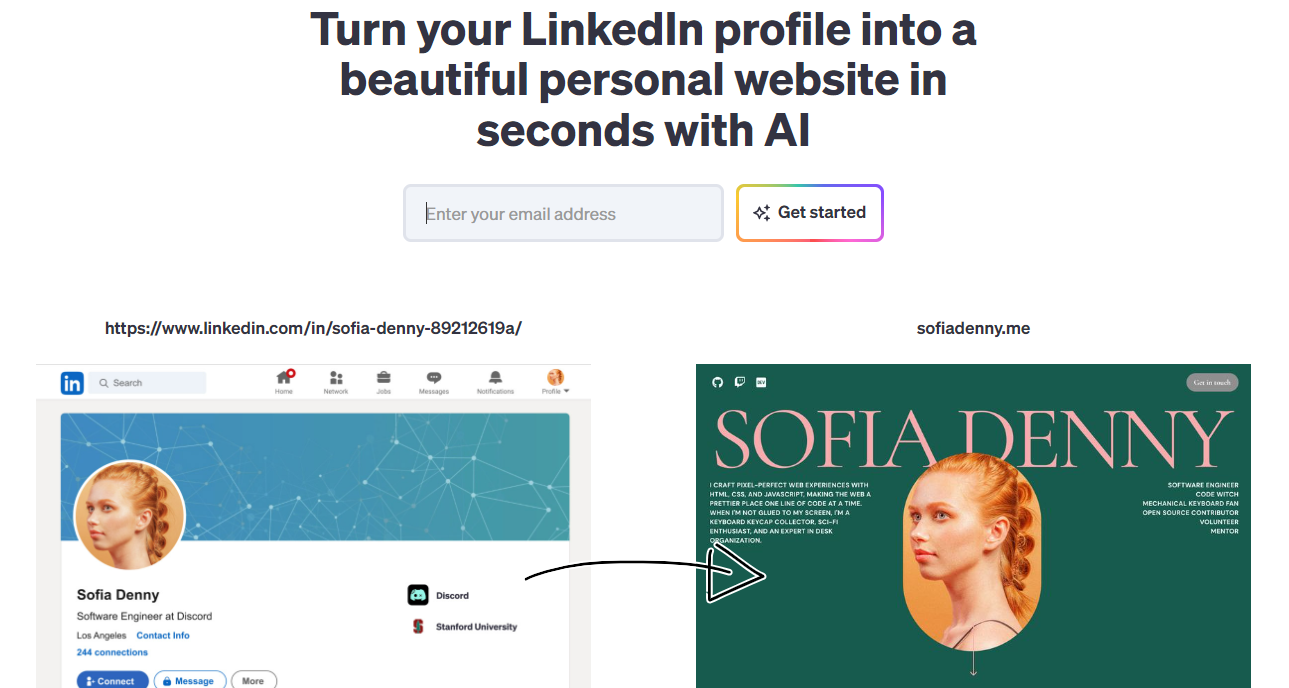
The best thing is that it's free, and you can buy it for around $96 for a year. That's a pretty good deal considering all the new fonts, layouts, and colors you'll unlock with the premium version.
This is from one of those templates. Cool right :D
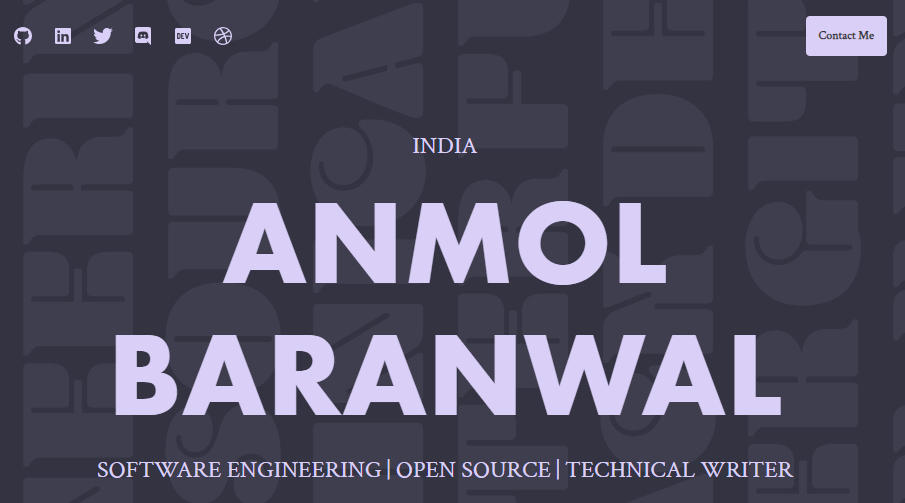
In the free version, you get a button to randomize your portfolio (different themes and layout). Try it for sure!
You can add a personalized link like this.

You can create highlights, along with sections like "About Me," "Social Links," and a personalized "Heading." Plus, there's a wide selection of over 1,000 badges tailored to various profiles for you to choose from.

The out-of-the-box is that you can control your social card, metadata, and even the title of the page. That gives you complete control that can make your portfolio look authentic.

There is so much to talk but the handiest feature is how quickly someone can contact you. It's like in mere seconds, And let's face it, that's exactly what every portfolio needs.

You can check my polywork profile as a sample.

One of the best profiles on polywork is from Mike Bifulco - Co-Founder of Craftwork. Check it out!
It won't even take you more than 4 hours to create a good portfolio on polywork.
2. Peerlist
I've been a part of Peerlist for several months now. I'm also part of their beta mobile users.
You can make a good portfolio on your domain name apart from other things you can do with peerlist. Let's discuss some of those.
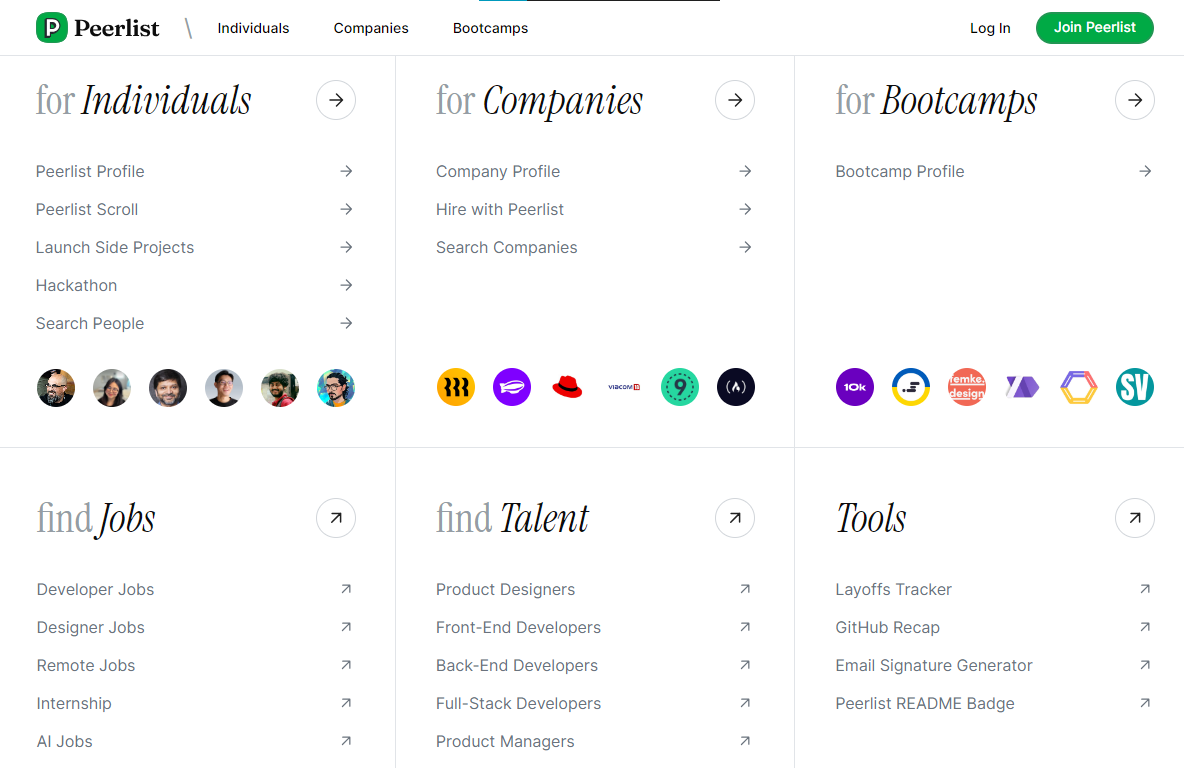

You can have everything in one single profile.
GitHub profile, Contributions, and pinned repositories
DEV + Hashnode + Medium blog posts
YouTube videos
Substack + RSS Feed
Codeforces and other coding profiles
You can even add your hunted or maker products from Product Hunt
Basically everything :D


There is also a concept of collections on peerlist. I've seen those elsewhere, but getting these under your profile is indeed awesome.
You can add your social profile cards in one place. And your recommended videos, books, podcasts, or custom ones.

You can even find jobs and get verified with your resume & experience.

One more thing you can do is vouch for someone which improves credibility and gives you a clear edge on the profile. It is similar to the recommendation on LinkedIn, but they have made it slightly creative with the card.

You can connect your profile to your custom domain for free. So, this is what your portfolio will look like.
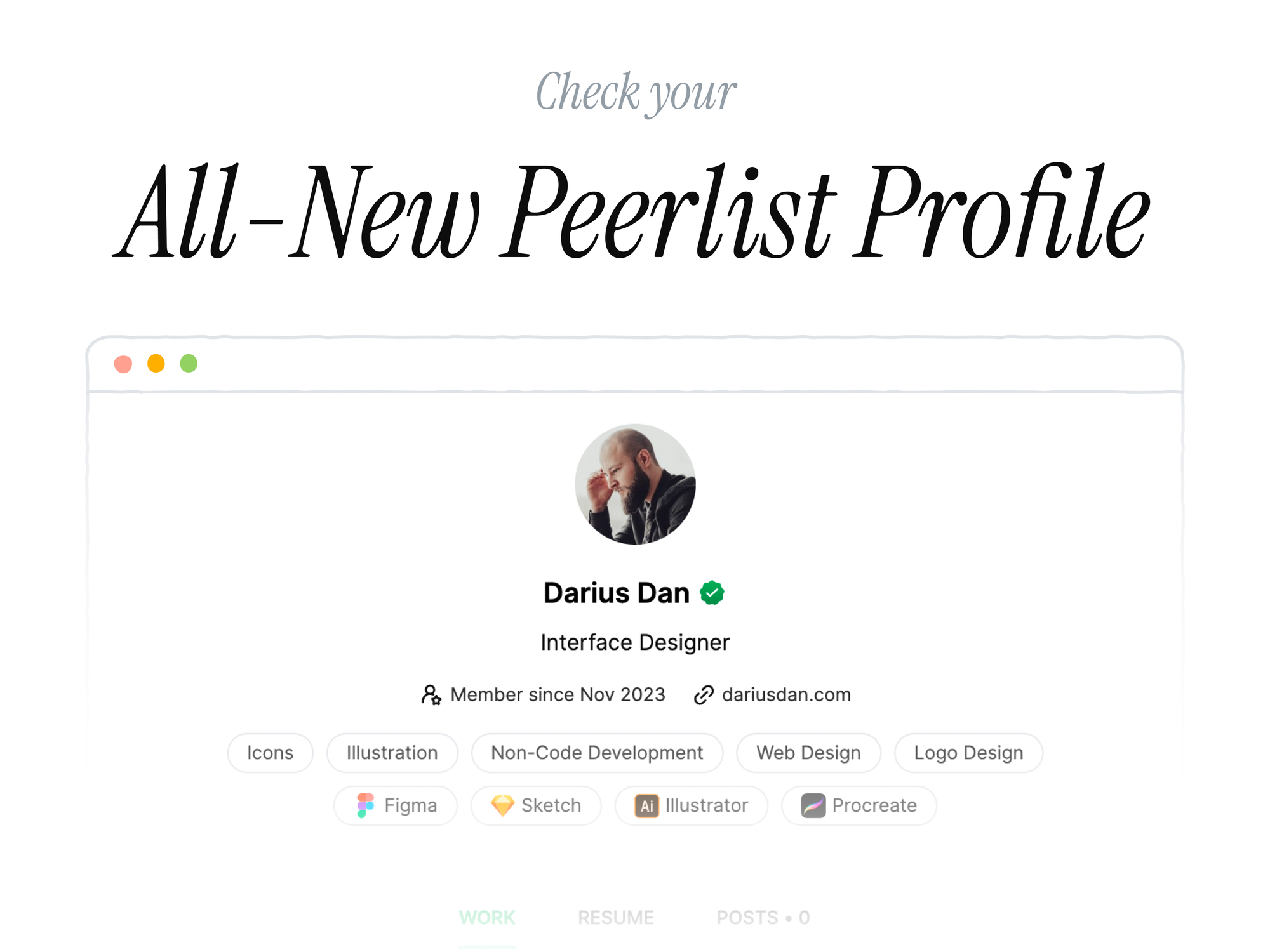
By the way, if you're wondering -> your social links will be at the bottom.
You can even get your project spotlighted at peerlist :D There are a lot of things involved, and I can't cover them all.
I will cover something exciting from Peerlist in a later post. Be tuned!
3. Showwcase
The main aim of Showwcase is to create a strong developer community. Showwcase was the first one that I used several months ago.
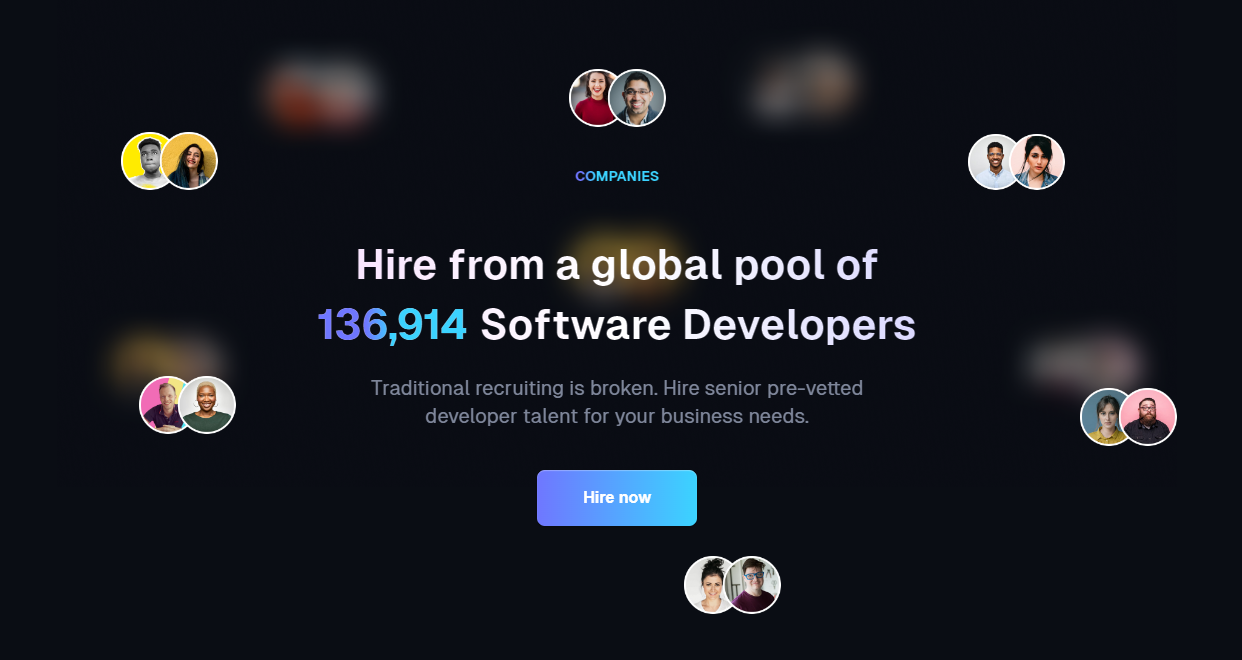
A simple yet powerful way to showcase your story.
One of the most unique features is that you can connect with Stripe, and you can earn money from paid followers. How cool is that?
These are some of the sections that you can make apart from custom ones.

You can easily add social links and check some awesome communities like Open Source, Hackathons, Internships, Portfolios, and many more.

You can get referrals and even add collaborators which is one heck of a deal. I was amazed by this from the very start.

You can generate and make your ATS-friendly resume with your personal link. For instance, you can find mine here. It uses the website information. By the way, my profile is not updated :D
The community is huge, and I have been a part of Showwcase for several months.

You can check my showwcase profile at anmol-baranwal.showwcase.com
See the profile of Rong - CEO of Showwcase.
You can hire and get hired at Showwcase.
I'm not a fan of the resume feature, which simply gathers data from the profile. Having your resume would be more beneficial. But Showwcase already provides more than you need.
4. Read
This is another way to make your portfolio. I loved the user interface of Read.
The best thing is that someone can contact you on the go, and it's so easy to find that contact button with a sweet emoji. It actually encourages people to use that contact section.

You can check the profile of Edmundo Santos on ReadCV. It's pretty great.

There are various sections like social links, experiences, side projects, speaking, writing, and many more.
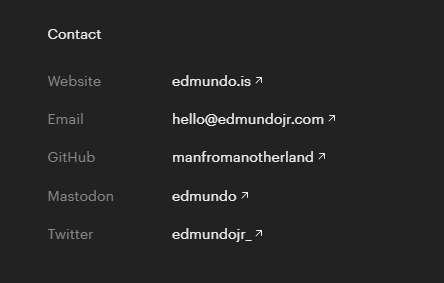
The number of sections that you can add is unbelievable. It gives you a lot of flexibility in the sections.

Of course, there are job listings and a custom domain to which you can link your profile. The layout is fixed, but it is more than enough to get you started.
I've seen so many great people using Read as their go-to profile!
These are some awesome resources that you can use.
Minimal Portfolio Template for Developers - 13k Stars on GitHub
When you connect your profile to a domain, no one has the time to see if you made the portfolio yourself. It is amazing as long as it works for YOU.
Did you find this helpful?
I've tried these except ReadCV (newbie) for many months and only then I'm letting you know. By the way, none of these are sponsored. I wish it were. LOL!
If you're sticking to those plain, boring tools, you're missing out. You can create your portfolio without any hassle in this techy world.
Coders would deny that creating such a portfolio won't work, well it's not true, and it's good if it works for you.
I've done programming for 5k+ hours, and I'm telling. Anything good is better than having a bad portfolio.
As I said at the start, it's okay if you don't want to create your original portfolio with programming because only developers should do it using code.
What more do you need? Hurry! Create your portfolio and show the world :D
Which do you think is the best? I like Polywork & Read. Both are the least ones I've used in the list :D
I'm glad I finally wrote this. I write content by researching thoroughly and sharing my experiences. You can support me by sponsoring me on GitHub.
Please please follow me on GitHub & Twitter :)
If you are keen on sponsoring this post, shoot me a message at anmolbaranwal119@gmail.com or hit me up on Twitter! 🚀
Write more, inspire more.

